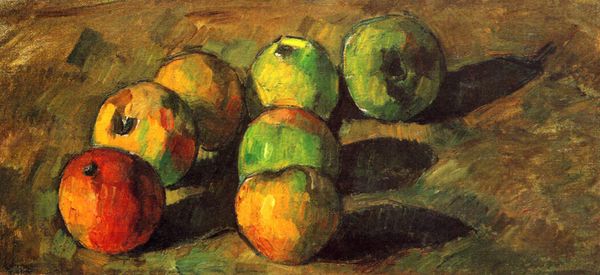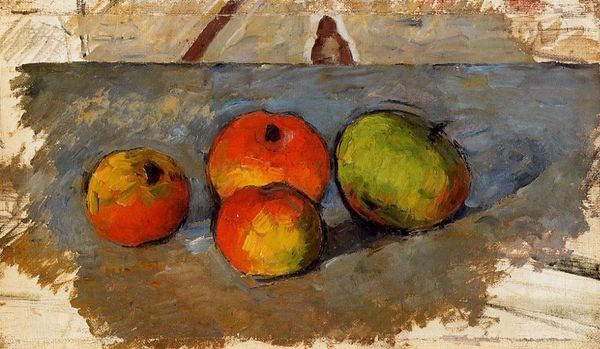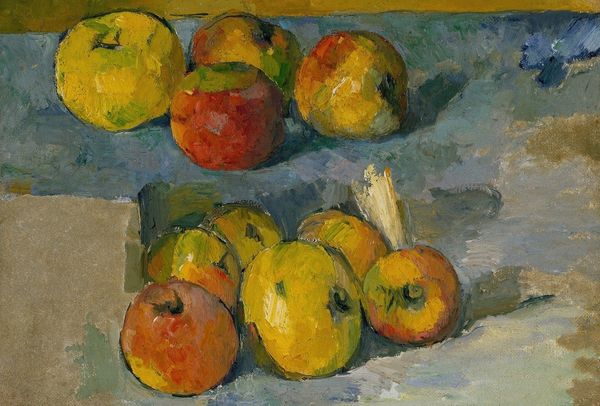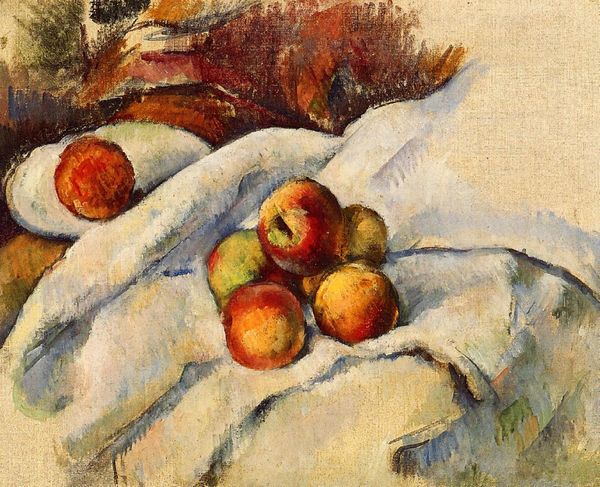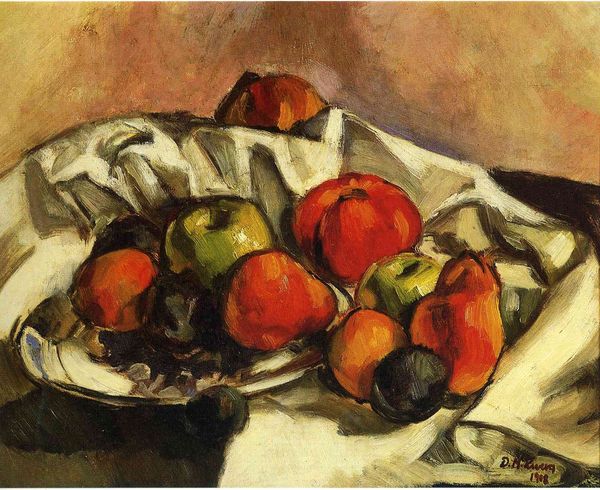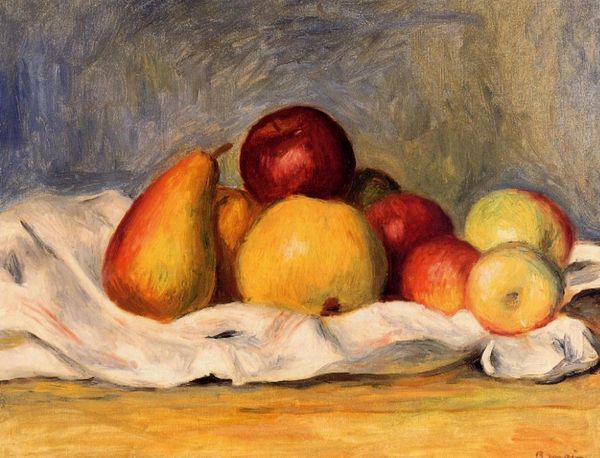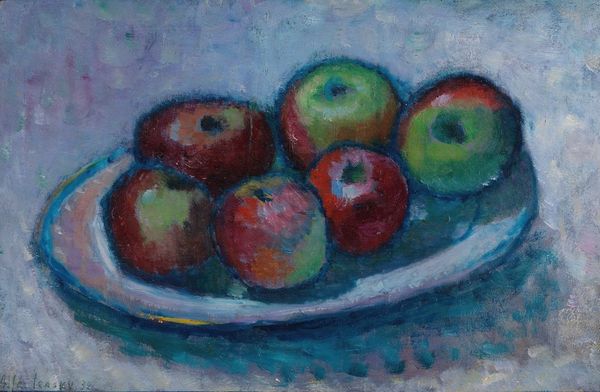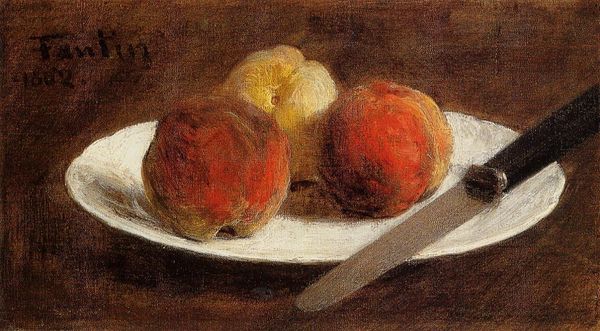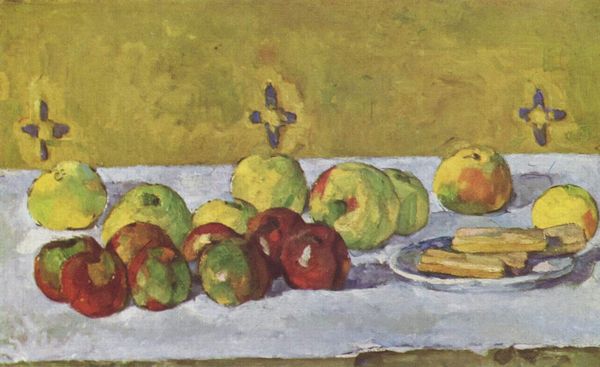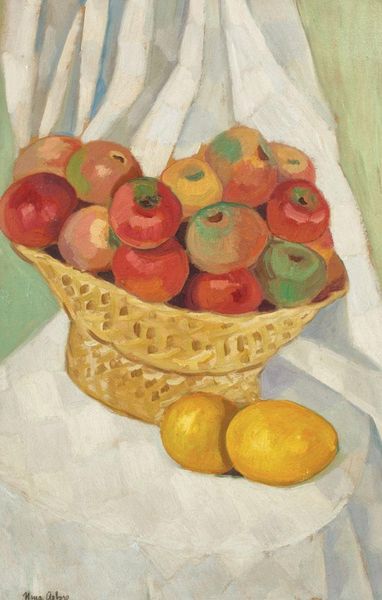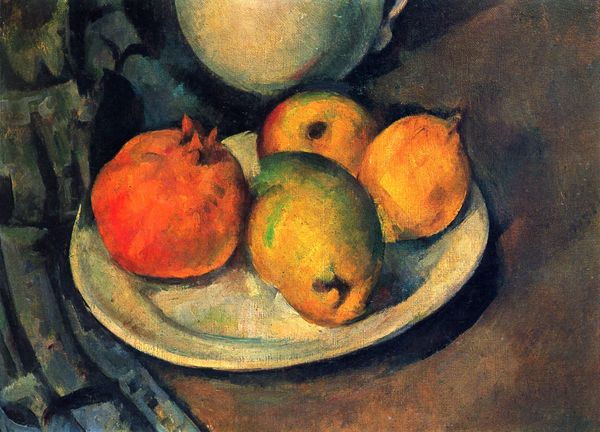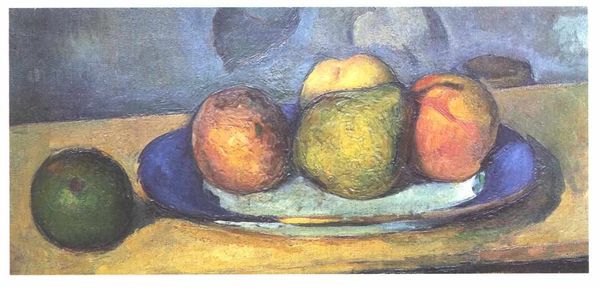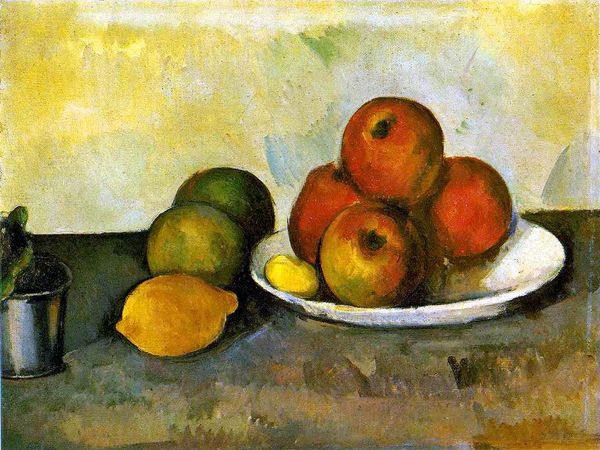
Copyright: Public domain
Editor: This is "Apples," an oil painting done around 1878 by Paul Cézanne. The brushstrokes are so thick; they really give the apples a tangible, almost sculptural feel. What strikes me, though, is how even in a simple still life like this, there’s a sense of tension and instability. How do you interpret this work? Curator: Well, the beauty of Cézanne is that he manages to disrupt our conventional ways of seeing, even in something as commonplace as apples. Think about the late 19th century: France was grappling with immense social and political shifts. The rise of industrialization, the lingering impact of the Franco-Prussian War. What if these apples represent more than just fruit? Editor: More than fruit? You mean as a metaphor for something? Curator: Exactly! Consider the patriarchal structures of the time. Are these apples a challenge to the established order? He flattens perspective, subverts traditional notions of beauty, and seems to question the very nature of representation. It's a move towards destabilizing the status quo and redefining our expectations around form. How does that reading sit with you? Editor: It’s fascinating to think of a still life holding such a politically charged message. I had never considered the socio-political elements, like France dealing with the fallout from industrialization. It does feel different now. Curator: It's a reminder that even seemingly simple subjects can be powerful statements. We can learn to really ‘see’ an artwork when we look at it with an eye toward challenging its cultural context. Editor: Thanks, this definitely gives me a new appreciation for this deceptively complex painting. I can see so many narratives now!
Comments
No comments
Be the first to comment and join the conversation on the ultimate creative platform.
